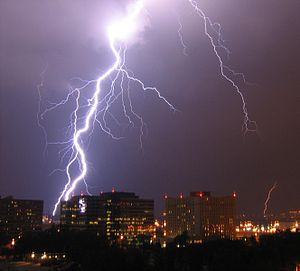 |
| http://www.tn.gov/environment/parks/MeemanShelby/ |
It was one of those wonderful summer weeks in Memphis. The weather was stifling hot, but we were too young to notice. Our days were spent riding our bikes, planning adventures, and mostly staying out of our parent’s hair so as not to make a mess and thus be tasked with a ‘make work’ summer task like weeding the garden or mowing the lawn. My then current best friend at that time was a kid that was one year younger than me and lived a few doors down the street in one the ‘new’ duplexes. I remember when they built those duplexes. Up until that time, the field where they were built was pretty much an overrun lot where we played baseball and flew our tethered model planes. We were really against the idea of the houses to the point where we would sneak out and pull up the surveyor stakes at night when no one was looking. This did not have too much an effect as we merely pulled them up but were not larcenous enough to actually steal or move them.
Anyway Scott was the older brother of the (in)famous McManus pair. They were the sons of a single mother, which meant that more often than not, they were casually supervised. This meant that they had the reputation for getting in trouble and fighting a great deal, both with themselves and with others. That summer Scott was my best friend and we did pretty much everything together, while striving to exclude his younger sibling (Nolan) from whatever we were about. We did all the usual kid stuff, but by the end of the summer, we were looking for more. Thus, the idea for our ‘grand adventure’ was born.
There is a state park just north of Memphis called Meeman-Shelby Forest State Park. It consists of about 30 square miles of marsh and heavily wooded land adjacent to the Mississippi river with a couple of lakes, and the rest of the park given over to hunting (at that time). I had spent some time there with my siblings and father, hunting or fishing. I was well acquainted with the route there, even though the trip from our house on the outskirts of Bartlett to the park was probably almost an hour by car at that time down various back roads. On the other hand, Scott had not been to the park at all. By our thinking, it was a simple plan. Ride our bikes to the park, see the river, eat a packed lunch, and then ride back. What was missing in the equation? An objective measurement of the distances involved (25 miles one way), the temperature in Memphis on a hot summer day (90's with 90% humidity), and the colossally bad judgment of a pair of 11 & 12 year olds (incalculable).
Being the geniuses of planning that we were, we assumed that a couple of candy bars would be sufficient to power us through the short trip to the park. We completely discarded any need for water as I recalled there were ample water fountains in the park. Thus, more than adequately fortified, we informed the responsible adults in our life (my mother and his sitter), that we were ‘going for a bike ride’ and set off. We passed our school and familiar haunts, and then we were in areas only glimpsed through the open windows of the car passing at high speeds. Before too long, we were at the rural airport where my father occasionally flew, then past the heavy industrial area with its odd rust burning and overripe wheat smells. Peddling away, we took a four lane road to nowhere, then, following my visual memory, various country roads until miraculously, we arrived at the park headquarters. That was where we started making bad decisions.
The goal of the trip was to see the Mississippi river. Inexplicitly, I had no visual memory of how to get there from the park entrance, as my family had only had the occasion to go to that part of the park on a few rare occasions. Thus, we had to rely on the questionable ability of a couple of 12 year olds to read and conceptualize the map of the park clearly displayed at the park entrance. We studiously committed the map to memory and, after a few sips of water from the outside fountain, were ready to proceed to the river, which was a mere 5 miles away. Note, that it did not occur to either one of us at that time that we were about to add 10 more miles to our trek.
As we made our way around the edge of the park, we had to peddle up and down some steeper hills than we had encountered on our trip. This was due to the natural rise of the land leading up to the river. Once we reached the northern edge of the park, the land began to fall away, and the ride down the road to the river was all downhill. Once we reached the river, we were elated. Our goal was reached! We celebrated by eating our candy bars. It was at that point that we also realized we were getting just a bit tired. Looking across the parking lot, I spied an opening into the woods. The germ of an idea began to form. ‘Why not take this shortcut back to the park entrance?’
The previous fall I had accompanied my brother to this very spot on his very own ‘amazingly really stupid thing’. We were ostensibly there to hunt squirrels. Squirrels having the common sense to be sleeping in the middle of the cold day, we left the hunting area just south of the northernmost road of the park, and proceeded to the river and more interesting pursuits. The map indicated there was an ‘unimproved road’ that ran along side of the river that joined another ‘unimproved’ road to an adjacent hunting area. Thus, his 17 year old logic told him that this sandy, vine covered track would be no problem for our sturdy VW van. It only took several hours of first pushing and shoving the van out of one sandy hole to another, to convince himself that this was not going to work. With no place to turn around, we then proceeded to push, shove, and scrape the van backwards down the track back to return to the entrance. Of course the only thing my 11 year old brain retained from that experience was the wholly inaccurate idea that there was a shortcut from the river parking area to the park entrance.
So with the prospect of a quick way back to the park entrance, we set off down the (still) vine covered track. We almost immediately ran into the same problem the van had encountered. The sandy soil made it impossible for the bikes to gain traction forcing us to walk. When a trail that looked less sandy branched off to the east, we decided to take that. Our decision making got worse and worse, as we were further forced to make turns to unknown directions. We weren’t necessarily lost as we knew the way back to the river, but it was a long way and getting longer. We made our one wise decision to stash our bikes, and walk back to the river and get a ride home from there. When we reached the river, we were really, really thirsty. There in front of us, in its rolling glory, was all the water in the world. So that’s how I came to drink muddy water, fresh from the Mississippi.
Our extraction from the situation from there was uneventful. We made it to the parking area, where we managed to get a ride from a stranger who, oddly enough did not try to kill us and gave us a ride home. After arriving home, my parents took us back to find the bikes, which were located less than a 100 feet from a road near the entrance to the park. We had apparently made every turn in that trail system except the ones that would have led to a successful exit. I did not hang out with Scott much after that. I suspect I was viewed as a bad influence, why I can’t say.




